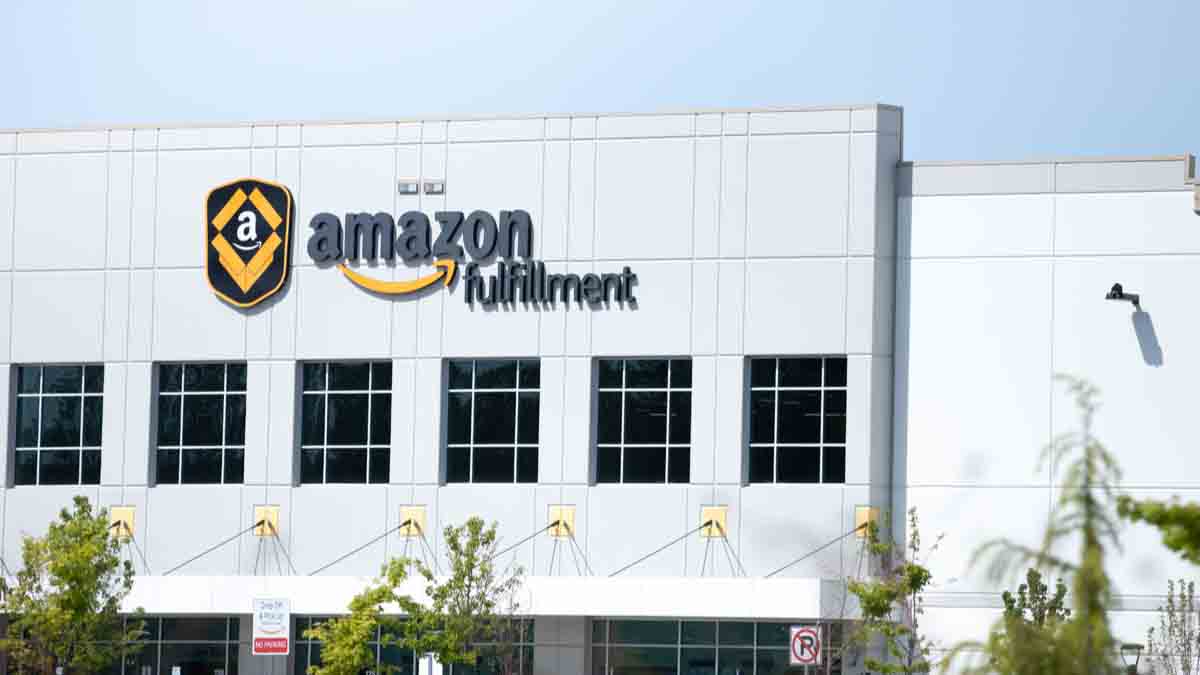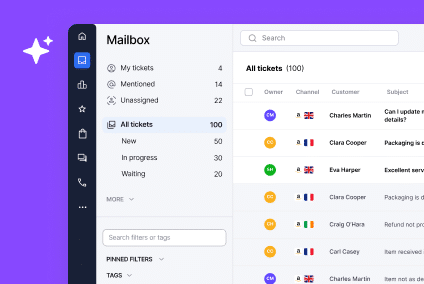If you were to believe the online hype, you could easily think that making money as an FBA seller is a doddle.
I mean, all you have to do is create a few listings, send goods to an Amazon warehouse once in a while, answer the odd customer query and watch the money roll in, right?
For every seller who swears blindly that FBA is the best business decision they have ever made, however, I can guarantee you that there are another ten who deeply regret it.
By no means do I want to discourage every seller out there, but people should be aware of what it really takes to make FBA work.
Spoiler: It’s really not as “hands-off” as some would have you believe.
The fees quickly become penalties
Online selling is a margins game and FBA is going to take a slice out of yours. If you’re already struggling to make the percentages work for you, then FBA isn’t going to change that.
Below is the basic formula for how Amazon calculates what you owe:
Fulfillment Fee + Storage Fee + Additional Fees = Total FBA Cost
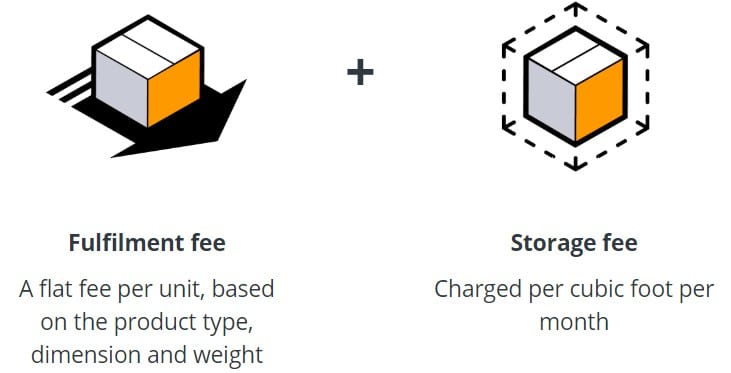
Now, the first part of that is pretty straightforward. In fact, your per-unit fulfillment fee may be less than it would if you were looking after it yourself. Amazon has built up an incredible web of logistics partners that allows it to keep costs down.
There are no qualms here. Factor this fulfillment fee into the selling price, which you’d be doing anyway, and you’re fine.
It’s the storage fees that can really hurt sellers, however. With Amazon FBA storage fees increasing in 2025 and new fee structures being introduced, understanding these costs is crucial for any Amazon FBA seller.
Here’s the simplest way of putting things: if you have products sitting too long at an Amazon warehouse then you are going to pay through the nose for them. Especially if they’re big!
Current 2025 Storage Fee Structure:
- Standard-size items now face an Aged Inventory Surcharge starting at 181 days (not 365 days like before)
- Items stored over 365 days incur a monthly fee of $1.50 per cubic foot or $0.15 per unit (whichever is greater)
- New Storage Utilization Surcharge applies to sellers with high inventory relative to sales velocity
- Inventory Storage Overage Fees of $10 per cubic foot for exceeding capacity limits
If you know there are certain large ticket SKUs in your inventory that don’t sell quickly then I’d recommend you steer clear of using FBA for them.
FBA isn’t going to work for everyone on the marketplace. But then again, it’s not designed to.
Traditionally, the items that work best for Amazon FBA sellers tend to be small (in terms of both weight and dimensions). I’m not saying outright that oversized goods should be disregarded entirely, but you could very easily find yourself with a hefty storage fee to pay a few months down the line.
Related article: Are You Spending More Than You Should on Logistics?
Seller beware! The FBA horror stories
If you want to scare yourself out of the idea of using FBA at all, just go onto the Amazon Seller Central forum. There are countless unhappy merchants disappointed with some aspect of the service.
If you really want to give yourself sleepless nights, however, you simply have to read about this one. The short version is that a seller with a 97% positive rating and a thriving business lost everything overnight through no fault of their own. Seller beware.
It’s enough to send shivers down the spine of even the most hard-nosed trader. Although this incident took place in 2012, there are recent examples of Amazon being slow to ship goods and giving themselves a price advantage that sellers can’t match.
Remember, when you’re selling on Amazon, in many cases you’re competing against them! You wouldn’t let another seller look after your fulfillment, so be very careful when giving that responsibility to Amazon!
FBA Horror Stories: Modern Challenges in 2025
If you want to scare yourself out of the idea of using FBA at all, just go onto the Amazon Seller Central forum. There are countless unhappy merchants disappointed with some aspect of the service.
Current challenges facing FBA sellers in 2025:
- Stricter Compliance Requirements: Amazon’s enhanced policies demand rigorous adherence, with non-compliance leading to account suspensions
- Rising Fulfillment Fees: Despite Amazon’s announcement of “no general fee increases” for 2025, many sellers report actual costs increasing by 12-18% for standard-size items due to new fee structures
- Intensifying Competition: With over 9.7 million sellers worldwide and approximately 3,700 new sellers joining daily, competition has never been fiercer
- Cash Flow Management: Balancing inventory investments, advertising expenses, and Amazon fees requires meticulous financial planning
If you really want to give yourself sleepless nights, however, you simply have to read about this one. The short version is that a seller with a 97% positive rating and a thriving business lost everything overnight through no fault of their own. Seller beware.
It’s enough to send shivers down the spine of even the most hard-nosed trader. Although this incident took place in 2012, there are recent examples of Amazon being slow to ship goods and giving itself a price advantage that sellers can’t match.
Remember, when you’re selling on Amazon, in many cases, you’re competing against them! You wouldn’t let another seller look after your fulfillment, so be very careful when giving that responsibility to Amazon!
Why Do Bad Things Happen to Good Sellers?
That’s a fair question. It’s reasonable to expect that a company the size of Amazon, at the very least, shouldn’t be sending out the wrong orders. To explain why this happens, you need to understand how FBA works behind the scenes.
Have you heard the term “co-mingled”? Basically, by default, Amazon lumps all of the same products into one storage bin in its warehouse. Yep, you read that right. It doesn’t matter where in the world it originally came from. Amazon might even have some of their own stock in there, too, for good measure. It does this in order to speed up the selection process.
So when a customer places an order for a certain product through your listing, they aren’t necessarily going to receive one that you supplied to Amazon. Here’s one example of how that can affect sellers negatively. There are, unfortunately, a whole lot more. If you’re interested, there’s a thread on Seller Central that covers ways of avoiding co-mingling.
What can you do if you think you’ve been hard done by?
As an Amazon FBA seller, you have to know your rights and entitlements down to the smallest details. Sure, it’s Amazon’s world, and you are only renting space there, but you still have recourse to correct injustices.
You can open a case with Amazon, outlining the error as you see it, supported by as much documentation as possible.
Usually, Amazon will cover the cost of FBA sellers’ returns, though not always. They may try to pass on the cost to you.
Be prepared to stand your ground. But sometimes, it’s best just to lick your wounds and move on.
How the top sellers makes FBA work
I spoke to Amazon marketplace expert Shannon Roddy to get his perspective on the value of FBA and how to make it work for you.
“With over 300 million Amazon customers and 200 million Prime members in 2025, FBA is becoming more and more critical to success. Free 2-Day Shipping. Prime members spend 2-3 times more than non-Prime members, so if your products aren’t Prime eligible, a majority of those customers won’t even see your products in their search results.
The biggest proactive steps sellers can take to minimize FBA fees in 2025 are:
1. Optimize Packaging
This means working to minimize the volume weight that Amazon charges sellers by, including the use of poly-bagging smaller products instead of using large boxes.
Related article: eCommerce Packaging: 13 Ideas to Delight Your Customers
2. Forecast Sales Accurately
The more accurately a seller can predict their future sales based on calculations including time of year, sales, promotions, etc, the more they can reduce their monthly inventory fees and long-term storage fees that Amazon is known for charging.
Modern inventory management is crucial – 66% of sellers in 2025 want to enhance their inventory management to keep up with FBA storage space and fees. With the new Aged Inventory Surcharge starting at just 181 days, accurate forecasting has never been more important.
If sellers have distribution centers or warehouses that can leverage Seller Fulfilled Prime, they can potentially take advantage of lower fees, but it requires concise inventory management, timely shipping and uploading tracking to comply with Amazon’s strict metrics.
Regardless of the size of any seller, it’s important to determine which products make sense for FBA and figure out how to maximize sales of their best-selling products using Amazon fulfillment.
Sellers that add FBA tend to see at minimum a 20% increase in sales almost immediately. For sellers who are limited by how many units they can send into FBA, it is beneficial to set up dual fulfillment, that is, an FBA and FBM listing on each ASIN so that if their FBA inventory happens to sell out, they can still continue selling the item merchant fulfilled.”
Shannon makes some really good points here. I particularly think it’s worth highlighting his last comment regarding the mix of FBA and FBM for the same ASIN.
The most successful sellers often mix and match their fulfillment strategy depending on the product type, demand and competition. Not every product in your inventory has to be FBA.
3. Use High-Quality Repricing Software
If you’re a third-party FBA seller, you’ll need the best repricing software. It helps you set the optimal price to win the Amazon Buy Box (more on that further down in the article).
If you’re trying to set your prices manually, you’re going to be outmaneuvered pretty fast! But, if you think that using Amazon’s own repricing software is a good idea, think again!
Amazon’s ‘Automate Pricing’ tool is free for sellers to use, but it has a number of serious limitations. The biggest issue is the speed, or lack of it! It takes 30 minutes to adjust your prices. In the world of repricing, that’s snail speed. For example, repricer.com can reprice every 90 seconds!
Why is repricing speed so important? It means your product will spend more time in the Buy Box. Over 82% of sales take place through the Buy Box, so if you want your product to spend as much time as possible there!
Related article: What Are the Top Features to Look for in an Amazon Repricer?
The common FBA Mistakes that sellers make
FBA expert Phil Masiello was also able to provide some excellent insight into some of the common errors he sees sellers making on a daily basis.
“There are three main pitfalls that I see FBA sellers make continually that affect their overall performance in the long term.
They Forget About Their Brand
Yes, you are selling on Amazon, and yes, it is their platform. But in the end, you want the customer to know who you, the seller, are.
Create your own products under your own brand. This is not a difficult achievement in this day and age.
You can register a trademark on the USPTO directly without the need for an attorney, and you can use any number of crowd-sourcing sites to develop a logo and brand image. This provides more control over profitability and growth.
Being a reseller of other brands is not a long-term profitable strategy unless you have a supply chain advantage. When you look at the big resellers on Amazon, they are all tied to a major distributor or wholesaler.
When FBA sellers do not own the product page and are just another seller on someone else’s listing, they are vulnerable. The only advantage is price. If others have a better cost advantage on the product, then you will win the Buy Box infrequently. Especially if it is a high-velocity item. Playing the online arbitrage game of trying to find products cheap in one channel and selling them on another is a lot of work for a small profit.
Building a brand will connect the customers to you for the long term and create customer retention and long-term value. Just look at Tuft & Needle. They started out selling mattresses on Amazon and created their own brand that spans multiple channels.
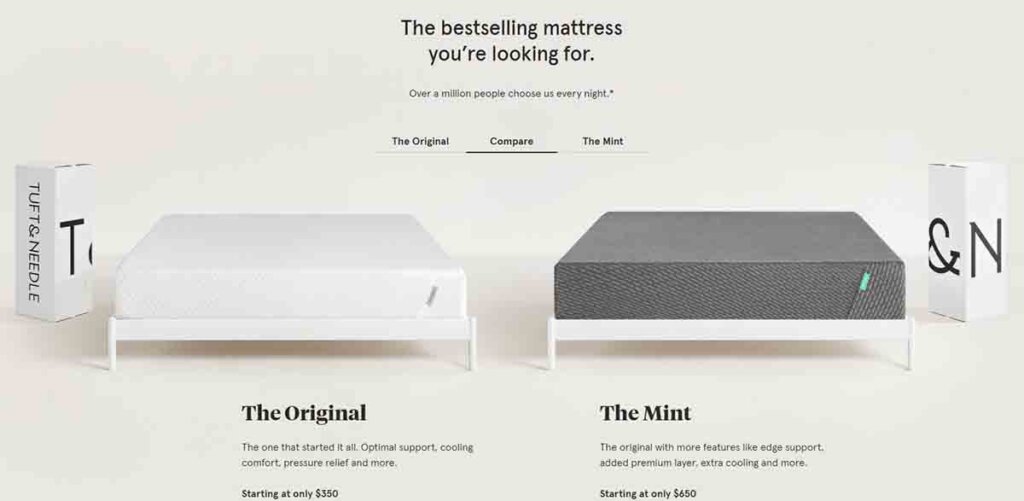
They Don’t Make Use of the Tools Amazon Provides
I meet far too many sellers who are enamored with finding a great tool to help them. Most of these tools are just harvesting information that is already in your account. The best place to find relevant target search terms is in your advertising reports for example. Also, Amazon collects and reports your sales tax. It’s built into your account.
What sellers should be focused on is getting into the brand registry. This enables sellers to create a storefront that allows the use of video, images and expanded content to discuss what you are all about. The registry also provides the use of Enhanced Brand content product pages, similar to A+ pages on Vendor Central. Inclusion in the registry also enhances your campaign manager, providing more tools for advertising.
Email your buyers through your selling account. There is no better way to get more ratings, build a brand and develop loyalty than with communication. Also, this is a great way to stop a negative review before it becomes one. The buyers now have a way to speak with you, the seller.
They Don’t Fully Understand Amazon Marketing Services
FBA sellers need to stop treating Amazon ad campaigns as if they were Google Ads. It is not the same. Amazon campaigns get more efficient the more optimized your product pages are. The best way to lower your ACoS (advertising cost of sale/spend) is with optimizing pages. Make sure that the Targets you are selecting in ads match up to what you have on your product pages.
Pull your advertising reports each week, use the information they are providing and make changes to your ads and your product pages. There is no information more valuable than these reports on Amazon.
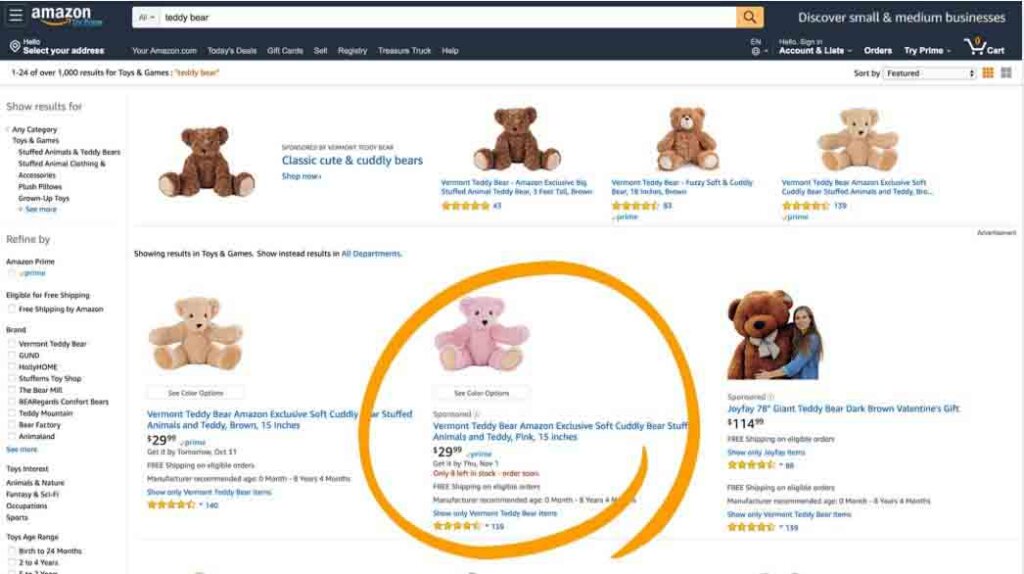
On the database side of a product page, you cannot use your competitors’ names or brands in any search term fields. But you can on the ad side. So build ads to target your competition.
Your ad reports are telling you the exact competitors’ product ASINs a customer was on when they saw your ad. That is great information to help you do a better job of targeting. When your pages are optimized, your CPC will be about 60% of the suggested bid for a targeted search term.”
For me, the biggest takeaway from what Phil is saying is that sellers can’t be totally reliant on Amazon to do all the work for them. For long-term success, you need to be wholly focused on building your brand up to a point where you can survive without Amazon. Otherwise, you will always be at the mercy of policy changes, fee increases or, as we discussed early, unfair bans or account closures.
Is FBA status essential to winning The Buy Box?
Whether you’re a seasoned Amazon FBA seller, or you’re totally new to it, the Buy Box should still be your goal. 82% of shoppers never even look beyond that yellow box. It’s the key to a successful Amazon business.
We’ve written before about what it takes to win the Buy Box. It’s a relatively complicated formula, with a few different aspects to it. Mainly, though, it comes down to price and fulfillment method.
All other things being equal (price, product, country, etc), in a battle between 2 or more merchants, the seller who is FBA will get the nod. For some commentators, FBA status matters more than price. So FBA sellers could, in theory, price higher than their rivals and still in the Buy Box.
2025 Buy Box Statistics:
- 82% of Amazon sellers now use FBA, making it almost essential for competitive advantage
- FBA users are 5.2 times more likely to earn $100,000 in their first year
- FBA sellers generate on average 6.3 times more sales in their first year than non-FBA users
Why? The cynics will say that it’s all part of Amazon’s master plan to make signing up for their optional programs a necessity in order to survive on the marketplace.
Maybe they have a point, but officially, the reason is that FBA guarantees customers prompt, reliable service. They are therefore more likely to make the purchase.
So yes, being an FBA seller can help you win the Buy Box. That alone will be enough information for some sellers to join up.
Again, I would urge caution though. If your products are otherwise better suited to self-fulfillment and if FBA would make it difficult for you to make a profit, then resist the temptation.
Modern FBA Seller Tools and Software
In 2025, successful Amazon FBA sellers rely heavily on technology to optimize their operations. Here are the essential FBA seller tools and FBA seller software categories:
Inventory Management Tools:
- Restock applications that provide insights into optimal restocking quantities and timing
- Inventory alerts that notify sellers when stock levels drop
- IPI optimization tools to maintain healthy Inventory Performance Index scores
Pricing and Competition Tools:
- Advanced repricing software that updates prices in real-time
- Buy Box monitoring tools to track performance
- Competitor analysis platforms for market intelligence
Fee Management Software:
- FBA fee calculators to estimate total costs
- Profit margin analyzers that factor in all Amazon fees
- Storage cost optimization tools to minimize inventory fees
Related articles:
- Amazon FBA Software: Essential Tools for Sellers
- Tips for Private Label and Amazon FBA Sellers
- Best Amazon FBA Courses
Success Statistics: What the Numbers Really Show
Understanding what “FBA seller meaning” encompasses in 2025 requires looking at real performance data:
Profitability Statistics:
- 58% of Amazon sellers turn a profit within their first year
- 72% of sellers make at least $1,000 per month
- 55% report sales of at least $5,000 per month
- 25% of sellers make over $100,000 annually
- Average profit margins for Amazon sellers range between 14-28%
Competition Reality:
- Over 9.7 million sellers worldwide (up from previous years)
- Approximately 1,100 new sellers join daily
- 60% of Amazon’s total marketplace sales come from third-party sellers
- US sellers averaged $290,000 in annual sales in 2024
FBA Adoption Rates:
- 82% of Amazon sellers use FBA (formerly 86% in 2024)
- 34% also use FBM in combination with FBA
- Only 14% use FBM exclusively
Conclusion
If you’re the kind of seller that needs full visibility and transparency across every aspect of your business, then you will find FBA incredibly frustrating.
There is potentially a place for it in your arsenal, but you have to have your eyes wide open going into it.
Starting as an FBA seller in 2025 requires:
- Understanding the new fee structures and storage limitations
- Having proper inventory management systems in place
- Building a brand that can survive beyond Amazon
- Using modern tools for pricing, inventory, and competition analysis
- Maintaining healthy cash flow despite increasing costs
To begin, send a small amount of products to Amazon and test the waters. If they move quickly, and you are turning enough of a profit from them, then make a bigger commitment next time. Play it cautiously at first and gradually scale up.
With 82% of sellers using FBA and intense competition, success requires more strategic thinking than ever before. The “hands-off” dream of passive income is largely a myth – successful Amazon FBA sellers in 2025 are data-driven, tool-savvy, and constantly optimizing their operations.
Try a better way to support your customers. Try eDesk for free – Sign up for a 14-day trial today. No credit card needed.
